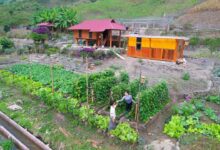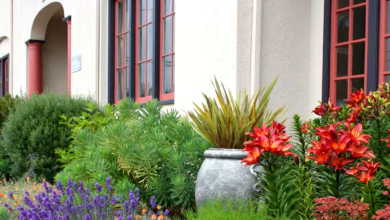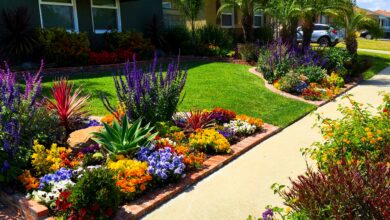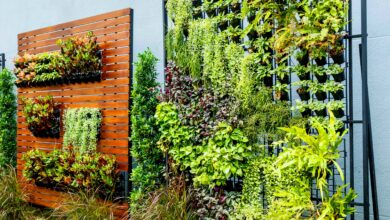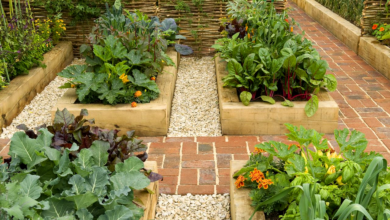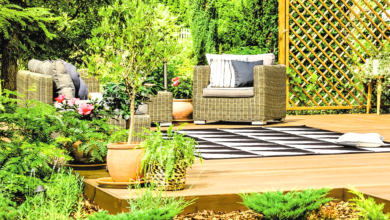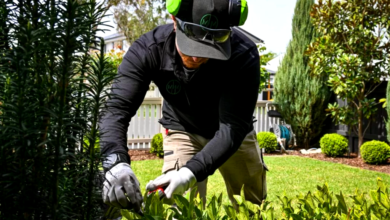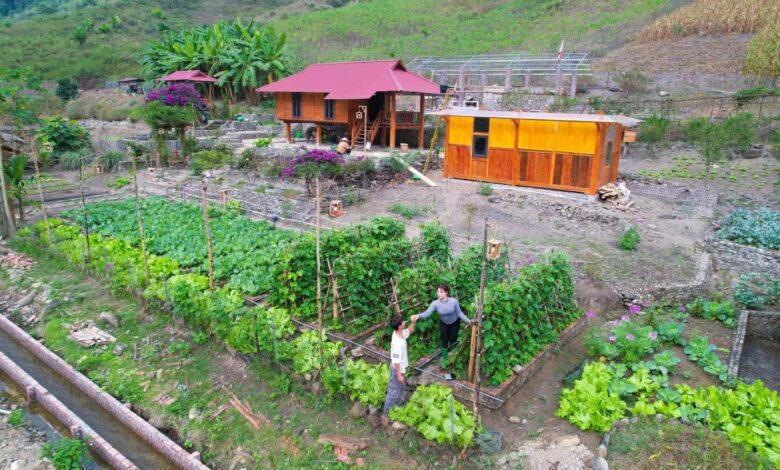
Sustainable gardening has emerged as one of the most transformative approaches to modern eco-friendly outdoor designs, revolutionizing how we create and maintain our outdoor spaces. As climate change concerns intensify and environmental awareness grows, homeowners and landscape professionals are increasingly embracing green gardening practices that benefit both the planet and their local ecosystems.
The concept of eco-friendly gardening extends far beyond simply avoiding chemical pesticides and fertilizers. It encompasses a holistic approach that considers water conservation, soil health, native plant landscaping, carbon sequestration, and wildlife habitat creation. Modern sustainable garden design integrates regenerative practices that actively improve environmental conditions while reducing maintenance costs and creating stunning outdoor environments.
Today’s environmentally conscious landscaping techniques leverage cutting-edge research in permaculture, xeriscaping, and ecosystem design to create outdoor spaces that work in harmony with natural processes. From organic garden supplies and rain garden installation to pollinator-friendly gardens and renewable energy integration, sustainable gardening offers endless possibilities for creating meaningful environmental impact.
Whether you’re a seasoned gardener looking to transition to more sustainable gardening practices or a beginner eager to start with eco-conscious landscape planning, this article provides actionable insights, expert recommendations, and innovative design ideas that will transform your outdoor space into an environmental asset. By embracing these green outdoor design principles, you’ll create a garden that not only enhances your property’s beauty but also contributes positively to the broader ecological health of your community.
Understanding Sustainable Gardening Fundamentals
The Core Principles of Eco-Friendly Garden Design
Sustainable gardening operates on fundamental principles that distinguish it from conventional landscaping approaches. These eco-friendly outdoor designs prioritize environmental stewardship while creating functional, aesthetically pleasing spaces that support local ecosystems and reduce resource consumption.
The first principle focuses on soil health and regeneration, recognizing that healthy soil forms the foundation of any sustainable landscape design. This involves implementing organic composting techniques, avoiding synthetic fertilizers, and promoting beneficial microbial activity through natural amendments. Regenerative garden design practices actively improve soil structure, increase carbon sequestration, and enhance nutrient cycling.
Water conservation strategies represent another crucial element of sustainable gardening practices. This includes designing drought-tolerant landscapes, implementing rainwater harvesting systems, and creating bioswales and rain gardens that manage stormwater runoff naturally. These approaches not only reduce municipal water usage but also prevent erosion and filter pollutants from entering local waterways.
Biodiversity preservation stands as a cornerstone of eco-conscious landscape planning. By incorporating native plant landscaping and creating pollinator-friendly gardens, sustainable designs support local wildlife populations, maintain genetic diversity, and strengthen ecosystem resilience. This approach reduces the need for external inputs while creating self-sustaining garden communities.
Benefits of Sustainable Garden Design
The advantages of sustainable gardening extend far beyond environmental impact, offering significant economic, health, and aesthetic benefits that make these practices increasingly attractive to property owners and landscape professionals.
Economic benefits include reduced water bills through efficient irrigation systems and drought-resistant plants, lower maintenance costs due to native plant selections that require minimal care, and decreased dependency on expensive organic garden supplies and amendments. Many sustainable landscape designs actually become more cost-effective over time as plants establish and natural systems mature.
Environmental benefits encompass carbon footprint reduction, improved air quality through increased plant coverage, enhanced biodiversity through wildlife habitat creation, and reduced chemical runoff that protects local water sources. These green gardening practices contribute to broader climate change mitigation efforts while creating measurable positive environmental impact.
Health and wellness benefits include reduced exposure to harmful chemicals, improved mental health through connection with nature, enhanced food security through sustainable food gardening, and better air quality around homes. Eco-friendly gardening practices create spaces that actively contribute to human well-being while supporting environmental health.
Planning Your Sustainable Garden Layout
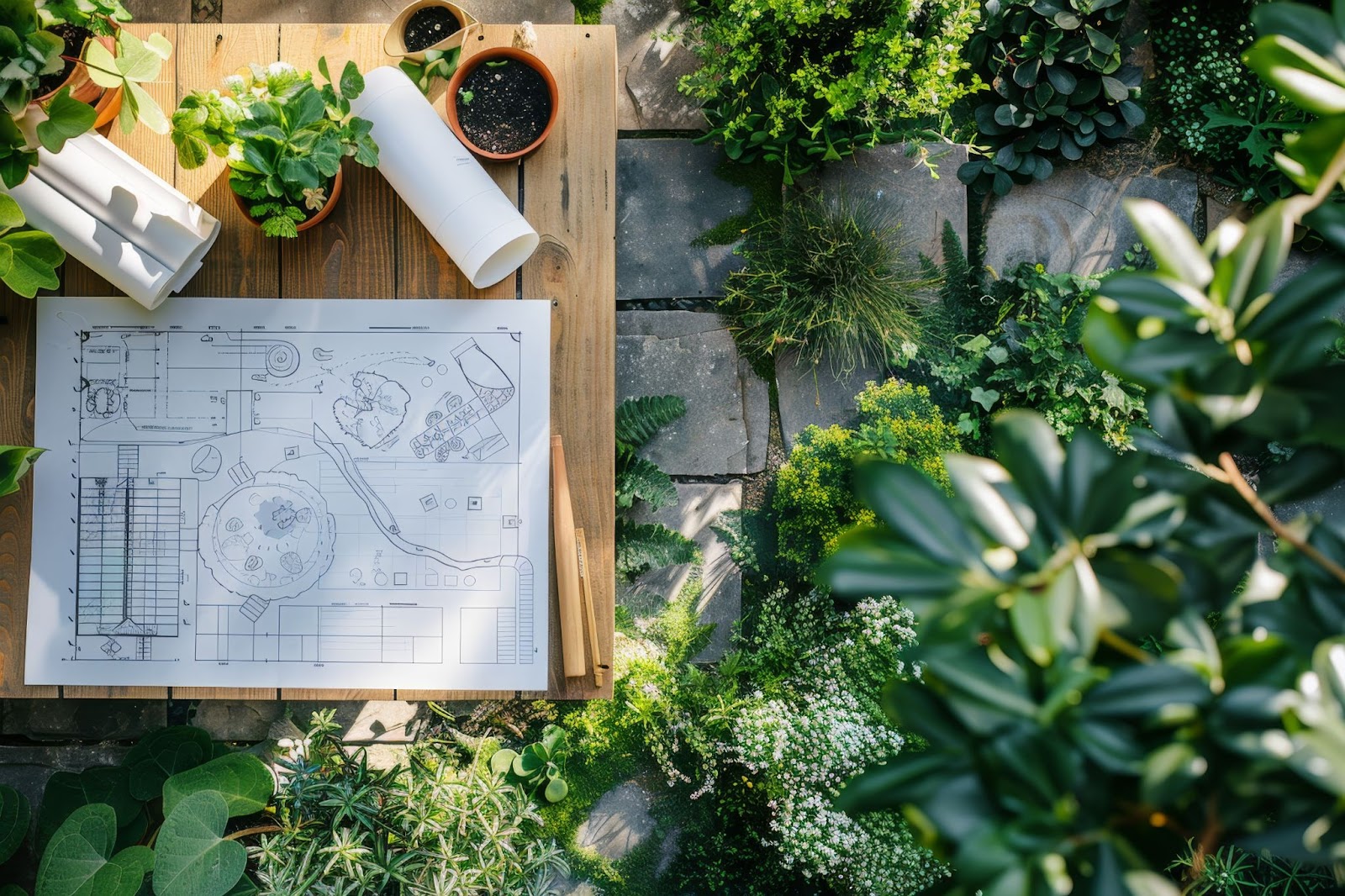
Site Assessment and Design Considerations
Effective sustainable garden design begins with a comprehensive site analysis that evaluates existing conditions, identifies opportunities, and establishes realistic goals for eco-friendly outdoor designs. This process forms the foundation for all subsequent design decisions and ensures optimal resource utilization.
Microclimate analysis involves studying sun exposure patterns, wind directions, moisture levels, and temperature variations throughout your property. Understanding these factors enables strategic placement of native plant landscaping and water-wise garden elements that thrive in specific conditions without requiring excessive inputs or maintenance.
Soil testing and assessment provide crucial information about pH levels, nutrient content, drainage characteristics, and existing microbial activity. This data guides decisions about organic soil amendments, composting strategies, and plant selections that will flourish in existing conditions while contributing to regenerative garden design goals.
Infrastructure evaluation examines existing hardscaping, irrigation systems, drainage patterns, and utility locations that may influence sustainable landscape design decisions. Identifying opportunities to repurpose materials, improve drainage, and integrate renewable energy systems helps maximize efficiency while minimizing waste.
Zoning and Functional Area Design
Strategic garden zoning optimizes resource use while creating cohesive, eco-friendly outdoor designs that serve multiple functions. This approach divides the landscape into distinct areas based on water needs, maintenance requirements, and intended uses.
High-maintenance zones typically include areas near the home where intensive gardening activities occur, such as sustainable food gardens, herb spirals, and entertainment spaces. These areas may require more frequent watering and attention, but provide maximum impact and enjoyment.
Medium-maintenance zones often feature native plant landscaping and pollinator-friendly gardens that require seasonal care but operate largely independently once established. These areas serve as transition spaces between high-intensity and naturalized areas.
Low-maintenance zones comprise the largest portions of sustainable landscape designs and feature drought-tolerant plants, native tree groves, and wildlife habitat areas that require minimal intervention once established. These zones provide maximum environmental benefit with minimal resource input.
Native Plant Selection and Biodiversity
Choosing Climate-Appropriate Plant Species
Native plant landscaping forms the backbone of successful sustainable gardening practices, providing numerous ecological benefits while reducing maintenance requirements and resource consumption. Selecting appropriate species requires understanding local climate patterns, soil conditions, and ecosystem relationships.
Regional native plants have evolved over thousands of years to thrive in specific climatic conditions, making them naturally drought-tolerant and resistant to local pests and diseases. These plants require significantly less water, fertilizer, and pesticide applications compared to non-native alternatives, supporting eco-friendly gardening goals.
Succession planting strategies involve selecting plants that represent different stages of natural ecosystem development, from pioneering species that improve soil conditions to mature forest plants that provide long-term stability. This approach creates sustainable garden designs that evolve naturally over time while requiring minimal intervention.
Seasonal interest planning ensures native plant landscaping provides year-round visual appeal through strategic combinations of flowering periods, foliage colors, and structural elements. This approach eliminates the need for high-maintenance annual replacements while supporting continuous pollinator habitat.
Creating Pollinator-Friendly Environments
Pollinator-friendly gardens represent one of the most impactful aspects of sustainable gardening, directly supporting biodiversity while enhancing food production and ecosystem health. These designs require careful attention to bloom timing, plant diversity, and habitat structure.
Native flowering plants provide essential nectar and pollen sources for local bee, butterfly, and bird populations. Selecting species that bloom throughout the growing season ensures continuous food availability, supporting pollinator conservation efforts while creating visually stunning, eco-friendly outdoor designs.
Habitat structure diversity includes incorporating plants of various heights, growth forms, and textures that provide nesting sites, overwintering locations, and protection from predators. This approach creates a comprehensive wildlife habitat that supports entire pollinator communities rather than individual species.
Chemical-free maintenance practices eliminate pesticide and herbicide use that can harm beneficial insects and disrupt ecosystem balance. Organic gardening techniques and integrated pest management strategies maintain plant health while preserving pollinator-friendly environments.
Water Conservation Strategies
Rainwater Harvesting Systems
Rainwater harvesting represents one of the most effective water conservation strategies for sustainable gardening, reducing municipal water dependency while providing plants with naturally soft, chemical-free irrigation water. These systems range from simple barrel collections to sophisticated underground cisterns.
Rain barrel systems offer entry-level rainwater collection that captures rooftop runoff for garden irrigation. Modern designs incorporate overflow mechanisms, mosquito screening, and distribution systems that integrate seamlessly with eco-friendly garden designs while providing significant water savings.
Cistern storage systems provide large-capacity rainwater harvesting for extensive sustainable landscape irrigation. These underground or above-ground tanks can store thousands of gallons, enabling substantial irrigation independence and supporting drought-resilient landscaping even during extended dry periods.
Distribution and filtration components ensure harvested water reaches plants efficiently while maintaining quality standards. Drip irrigation systems and soaker hoses maximize water use efficiency while minimizing evaporation and runoff, supporting water-wise gardening objectives.
Drought-Tolerant Landscaping Techniques
Drought-tolerant landscaping creates stunning, eco-friendly outdoor designs that thrive with minimal water input, making them ideal for sustainable gardening in water-scarce regions. These approaches combine strategic plant selection with soil management and design techniques that maximize water retention.
Xeriscaping principles guide drought-resistant garden design through strategic use of native plants, mulching strategies, and efficient irrigation placement. These techniques can reduce landscape water consumption by 50-75% while maintaining attractive, functional outdoor spaces.
Mulching strategies play crucial roles in water conservation by reducing evaporation, suppressing weeds, and moderating soil temperatures. Organic mulches such as wood chips, leaf litter, and compost provide additional soil improvement benefits while supporting sustainable gardening practices.
Soil amendment techniques improve water retention capacity through the incorporation of organic matter, biochar, and other materials that enhance soil structure. These improvements enable plants to access water more efficiently while reducing irrigation frequency and volume requirements.
Organic Soil Management
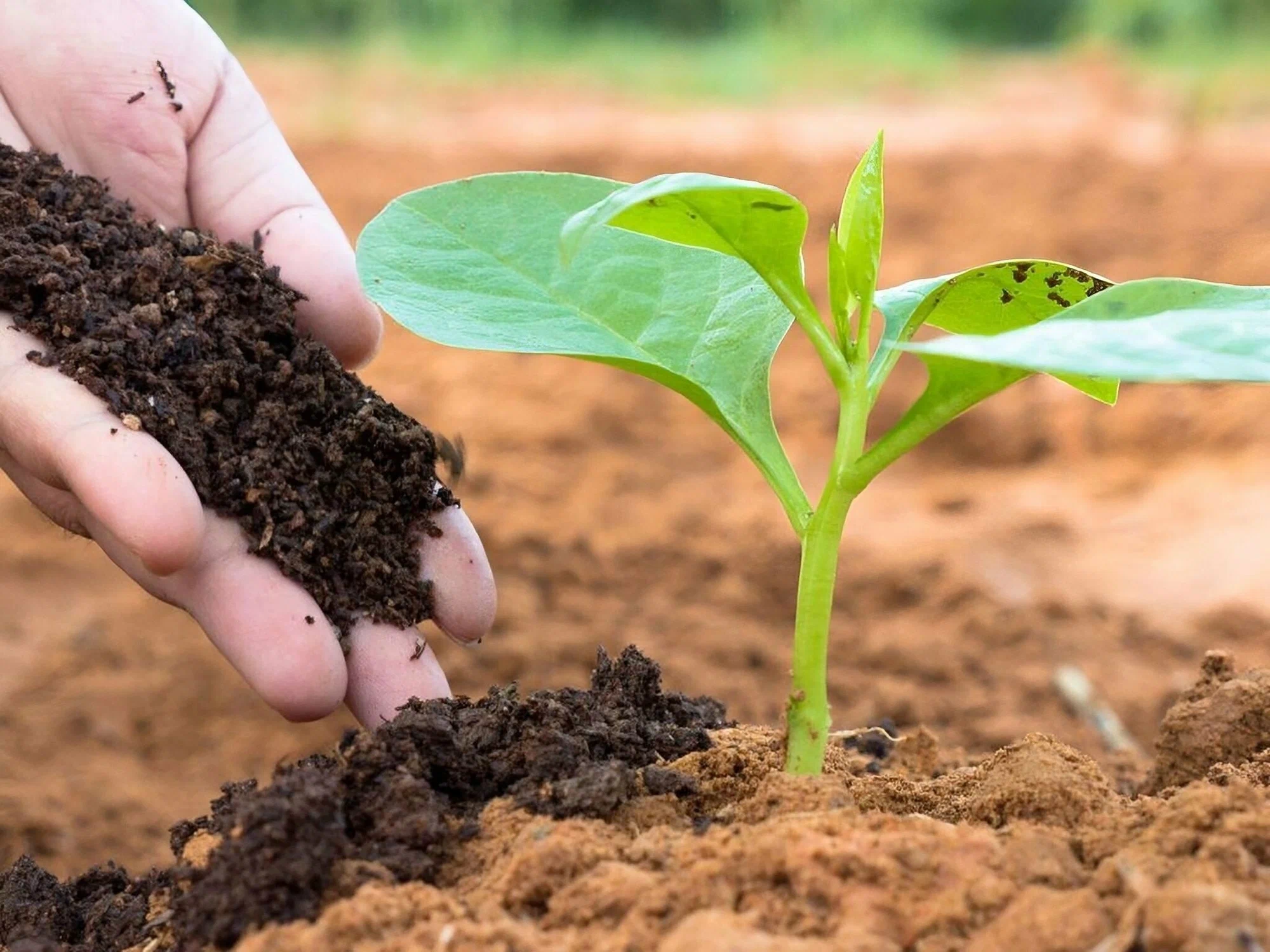
Composting and Natural Fertilization
Organic soil management forms the foundation of sustainable gardening, providing plants with balanced nutrition while building long-term soil health and supporting beneficial microbial communities. These practices eliminate dependency on synthetic fertilizers while creating closed-loop nutrient cycling.
Composting systems transform organic waste into valuable soil amendments that improve structure, fertility, and water retention. Hot composting methods produce finished compost quickly while eliminating pathogens and weed seeds, while cold composting requires less management but takes longer to complete the decomposition process.
Vermiculture systems utilize earthworms to process organic matter into nutrient-rich worm castings that provide excellent slow-release fertilization. These systems work particularly well in small spaces and produce both solid and liquid fertilizers for organic gardening applications.
Natural fertilization techniques include green manure crops, compost tea applications, and biochar amendments that improve soil fertility while supporting regenerative garden design principles. These approaches build soil organic matter while providing plants with balanced, long-term nutrition.
Soil Health and Regeneration Practices
Soil regeneration represents the ultimate goal of sustainable gardening practices, actively improving soil health while producing beautiful, productive landscapes. These techniques focus on building organic matter, enhancing microbial diversity, and improving soil structure.
Cover cropping strategies utilize nitrogen-fixing plants and deep-rooted species to improve soil fertility and structure during dormant seasons. These plants prevent erosion, suppress weeds, and add organic matter when incorporated into the soil, supporting regenerative landscape design goals.
Mycorrhizal inoculation introduces beneficial fungi that form symbiotic relationships with plant roots, dramatically improving nutrient and water uptake while enhancing disease resistance. These partnerships represent natural, eco-friendly gardening solutions that reduce the need for external inputs.
No-till cultivation methods preserve soil structure and microbial communities while reducing labor and fuel consumption. These approaches support sustainable garden maintenance by working with natural soil processes rather than disrupting them through mechanical cultivation.
Renewable Energy Integration
Solar-Powered Garden Systems
Renewable energy integration transforms sustainable gardens into completely self-sufficient systems that generate their own power for irrigation, lighting, and other electrical needs. These technologies align perfectly with eco-friendly outdoor design principles while reducing operational costs.
Solar irrigation systems provide reliable water delivery without grid electricity dependency, making them ideal for remote garden areas or properties seeking energy independence. Modern systems include controllers, timers, and sensors that optimize water delivery while minimizing energy consumption.
Solar lighting solutions extend garden enjoyment into evening hours while highlighting landscape features and improving safety. LED technology maximizes battery life and light output while requiring minimal maintenance, supporting sustainable landscape design goals.
Solar water features create focal points and habitat elements without increasing energy consumption. These systems can power fountains, waterfalls, and circulation pumps that enhance eco-friendly garden designs while providing wildlife benefits and aesthetic appeal.
Wind and Hydropower Options
Alternative renewable energy sources complement solar systems while providing diverse power generation options for sustainable gardening applications. These technologies work particularly well in regions with consistent wind patterns or flowing water sources.
Small wind turbines generate electricity for garden applications in areas with adequate wind resources. Modern designs operate quietly and efficiently while withstanding weather extremes, making them suitable for residential sustainable landscape designs.
Micro-hydropower systems utilize streams, springs, or redirected rainwater to generate electricity for garden needs. These systems provide consistent power generation while creating attractive water features that enhance eco-friendly outdoor designs.
Battery storage solutions ensure reliable power availability regardless of weather conditions, enabling consistent operation of irrigation systems, lighting, and other essential garden infrastructure. Modern battery technologies provide long service life while supporting sustainable gardening practices.
Wildlife Habitat Creation
Designing for Local Fauna
Wildlife habitat creation transforms sustainable gardens into thriving ecosystems that support local fauna while providing educational opportunities and natural pest control benefits. These designs require understanding local wildlife needs and creating layered habitat structures.
Bird habitat design incorporates native trees and shrubs that provide nesting sites, food sources, and protection throughout the year. Different bird species require varying habitat structures, from ground-nesting areas to tall canopy perches, enabling comprehensive wildlife support.
Pollinator habitat extends beyond flower gardens to include native bunch grasses, butterfly host plants, and overwintering sites that support complete pollinator life cycles. These elements integrate seamlessly into eco-friendly landscape designs while providing essential ecosystem services.
Small mammal habitat includes brush piles, rock gardens, and dense plantings that provide shelter and foraging opportunities for beneficial species. These features enhance biodiversity while creating naturalistic design elements that complement sustainable gardening aesthetics.
Native Plant Communities and Ecosystems
Ecosystem design recreates natural plant communities that support complex webs of interdependent species, providing maximum biodiversity benefits while requiring minimal maintenance once established. This approach represents the pinnacle of sustainable landscape design.
Prairie restoration techniques establish native grassland communities that support numerous wildlife species while providing drought tolerance and carbon sequestration benefits. These systems require initial establishment efforts but become increasingly self-sustaining over time.
Woodland edge habitats create transition zones between forest and open areas that support the greatest diversity of species. These ecotone environments maximize wildlife habitat value while providing attractive landscape features for eco-friendly garden designs.
Wetland creation establishes water-dependent ecosystems that support amphibians, waterfowl, and specialized plant communities. Even small rain gardens and bioswales provide significant habitat value while managing stormwater naturally.
Sustainable Hardscaping and Materials
Eco-Friendly Construction Materials
Sustainable hardscaping utilizes environmentally responsible materials and construction methods that minimize environmental impact while creating durable, attractive landscape features. These approaches support eco-friendly outdoor design goals while often reducing long-term maintenance costs.
Reclaimed and recycled materials, including reclaimed wood, recycled concrete, and repurposed stone, provide a unique aesthetic character while diverting waste from landfills. These materials often cost less than new alternatives while providing superior weathering characteristics and environmental benefits.
Local stone and materials reduce transportation impacts while ensuring climate compatibility and supporting regional economies. Native stone selections blend naturally with local landscapes while providing long-term durability and low maintenance requirements.
Permeable paving solutions, including pervious concrete, permeable pavers, and a gravel system, manage stormwater naturally while reducing runoff and recharging groundwater. These materials support sustainable drainage while creating attractive walkways and patios.
Green Building Techniques for Outdoor Spaces
Green construction methods minimize environmental impact during installation while creating sustainable hardscape features that enhance garden functionality. These techniques consider entire lifecycle impacts from material extraction through end-of-life disposal.
Dry-laid construction eliminates concrete footings and mortared joints, creating sustainable retaining walls and garden structures that can be disassembled and relocated if needed. These methods reduce material consumption while providing excellent drainage and flexibility.
Natural building techniques, including earth construction, living walls, and green roofs, integrate structure with planting areas to create multifunctional landscape elements. These approaches maximize ecological benefits while providing unique aesthetic appeal.
Minimal excavation methods preserve existing soil structure and root systems while installing necessary infrastructure. These techniques support soil health while reducing construction impacts and associated costs.
Maintenance and Long-term Sustainability
Seasonal Care Practices
Sustainable garden maintenance emphasizes working with natural cycles and minimizing resource inputs while maintaining healthy, attractive landscapes. These practices reduce labor requirements while supporting ecosystem health and biodiversity.
Fall preparation includes leaf management strategies that utilize fallen foliage as natural mulch and composting material rather than removing it from the site. This approach provides overwintering habitat for beneficial insects while improving soil health.
Spring emergence management focuses on gradual cleanup that preserves wildlife habitat while supporting new growth. Selective pruning and minimal soil disturbance maintain ecological benefits while preparing gardens for active growing seasons.
Summer maintenance emphasizes water conservation and integrated pest management that supports plant health without harmful chemical interventions. Mulching, companion planting, and beneficial insect habitat provide natural solutions to common garden challenges.
Integrated Pest Management
Integrated pest management (IPM) strategies maintain plant health through ecological approaches that work with natural systems rather than against them. These methods reduce chemical dependency while often providing superior long-term results.
Biological controls utilize beneficial insects, predatory species, and parasitic organisms to manage pest populations naturally. These approaches require understanding ecosystem relationships but provide sustainable solutions that improve over time.
Cultural controls include crop rotation, companion planting, and habitat modification that make environments less favorable for pest species while supporting beneficial organisms. These techniques integrate seamlessly with sustainable garden designs.
Physical controls such as row covers, traps, and barriers provide immediate protection while avoiding chemical applications. Modern materials and designs make these approaches practical and aesthetically acceptable for most garden situations.
Cost-Benefit Analysis of Sustainable Practices
Initial Investment vs. Long-term Savings
Sustainable gardening economics demonstrate significant long-term financial benefits despite sometimes higher initial investments. Understanding these cost relationships helps property owners make informed decisions about eco-friendly landscaping investments.
Water savings from drought-tolerant landscaping and rainwater harvesting systems typically recover initial costs within 3-7 years while providing ongoing savings throughout system lifespans. These benefits increase as water costs rise and drought conditions become more frequent.
Maintenance cost reductions from native plant landscaping and organic soil management eliminate ongoing expenses for fertilizers, pesticides, and frequent plant replacements. Sustainable garden designs often require 50-80% less maintenance once established.
Energy savings from renewable energy integration and climate modification through strategic plant placement provide immediate utility bill reductions while increasing property values. These benefits compound annually while supporting sustainable living goals.
ROI on Eco-Friendly Investments
Return on investment calculations for sustainable gardening projects demonstrate compelling financial benefits that extend beyond direct cost savings to include property value increases and quality of life improvements.
Property value increases from sustainable landscaping typically range from 15-25% above conventional landscaping investments, with native plant gardens and water features providing the highest returns. These improvements appeal to environmentally conscious buyers while reducing ongoing maintenance obligations.
Health and wellness benefits, including reduced chemical exposure, improved air quality, and enhanced outdoor living opportunities, provide value that extends beyond financial calculations. Sustainable gardens contribute to physical and mental health while creating community connections.
Environmental impact value includes carbon sequestration, biodiversity support, and ecosystem services that provide broader societal benefits. While difficult to quantify financially, these contributions create lasting positive impacts that enhance community resilience.
Troubleshooting Common Challenges
Climate Adaptation Strategies
Climate resilience in sustainable gardening requires adaptive strategies that prepare gardens for changing weather patterns while maintaining ecological benefits. These approaches build flexibility into garden systems while supporting long-term sustainability.
Drought preparedness includes water storage systems, drought-tolerant plant selections, and soil improvement techniques that help gardens survive extended dry periods. These strategies become increasingly important as weather patterns become less predictable.
Extreme weather protection utilizes windbreaks, storm-resistant plant selections, and flexible infrastructure that can withstand severe weather events while recovering quickly. Sustainable designs emphasize resilience over rigidity.
Seasonal adaptation involves microclimate management, season extension techniques, and flexible planting strategies that accommodate changing growing seasons. These approaches maintain productivity while working with natural variations.
Problem-solving for Common Issues
Sustainable problem-solving approaches garden challenges through ecological solutions that address root causes rather than symptoms. These methods often provide permanent solutions while supporting overall garden health.
Soil problems, including compaction, poor drainage, and nutrient deficiencies, respond well to organic improvement methods that build long-term soil health. These solutions improve conditions gradually while supporting beneficial microbial communities.
Pest management challenges benefit from habitat diversification, beneficial insect attraction, and companion planting strategies that create balanced ecosystems. These approaches require patience but provide increasingly effective control over time.
Plant establishment issues often result from inappropriate species selection or inadequate site preparation. Native plant alternatives and proper soil preparation eliminate most establishment problems while reducing ongoing maintenance needs.
Future Trends in Sustainable Gardening
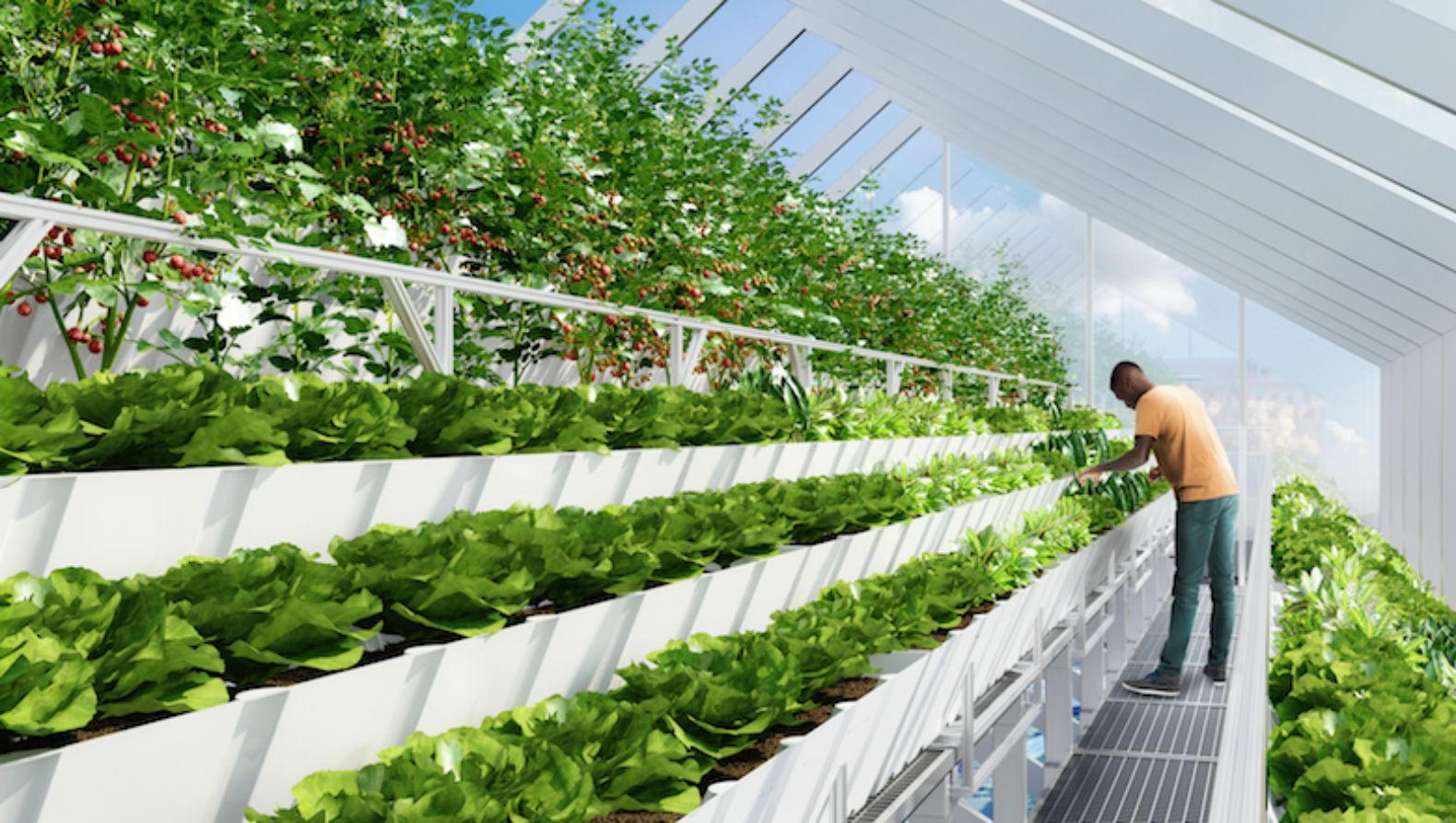
Emerging Technologies and Innovations
Sustainable gardening technology continues evolving rapidly, offering new opportunities to enhance eco-friendly outdoor designs while reducing resource consumption and maintenance requirements. These innovations support broader environmental goals while improving garden functionality.
Smart irrigation systems utilize weather data, soil moisture sensors, and plant-specific programming to optimize water delivery while minimizing waste. These systems can reduce irrigation water use by 30-50% while maintaining optimal plant health.
Automated monitoring includes soil health sensors, pest detection systems, and growth tracking technology that provide real-time garden information for improved management decisions. These tools support precision gardening approaches that maximize efficiency.
Advanced materials, including bio-based plastics, carbon-negative concrete, and smart mulch, provide improved performance while supporting sustainability goals. These innovations are often cost-competitive with conventional alternatives while providing superior environmental benefits.
Policy and Community Initiatives
Sustainable gardening policies at local and regional levels increasingly support eco-friendly landscaping through incentives, regulations, and educational programs. These initiatives accelerate adoption while creating community-wide environmental benefits.
Water conservation incentives, including rebates for drought-tolerant landscaping, rainwater harvesting systems, and efficient irrigation technology, make sustainable practices more economically attractive. These programs often provide 25-75% cost recovery for eligible improvements.
Native plant initiatives promote local ecosystem restoration through seed banks, plant exchanges, and education programs that support biodiversity conservation. These efforts create community connections while advancing environmental goals.
Carbon offset programs recognize sustainable gardening contributions to climate change mitigation through tree planting credits, soil carbon programs, and ecosystem service payments. These programs provide additional financial incentives while supporting broader environmental objectives.
More Read: Sustainable Gardening Services in Arizona: Eco-Friendly Solutions
Conclusion
Sustainable gardening and eco-friendly outdoor designs represent powerful opportunities to create beautiful, functional landscapes that actively contribute to environmental health while reducing resource consumption and maintenance costs. By implementing native plant landscaping, water conservation strategies, renewable energy integration, and wildlife habitat creation, property owners can transform their outdoor spaces into climate-positive assets that support biodiversity, sequester carbon, and provide lasting economic benefits.
The integration of organic soil management, sustainable hardscaping, and integrated pest management creates resilient garden ecosystems that thrive with minimal inputs while providing maximum environmental and aesthetic value.
As climate challenges intensify and environmental awareness grows, sustainable gardening practices will become increasingly essential for creating outdoor spaces that support both human enjoyment and ecological health, making now the perfect time to embrace these transformative approaches to landscape design and management.
